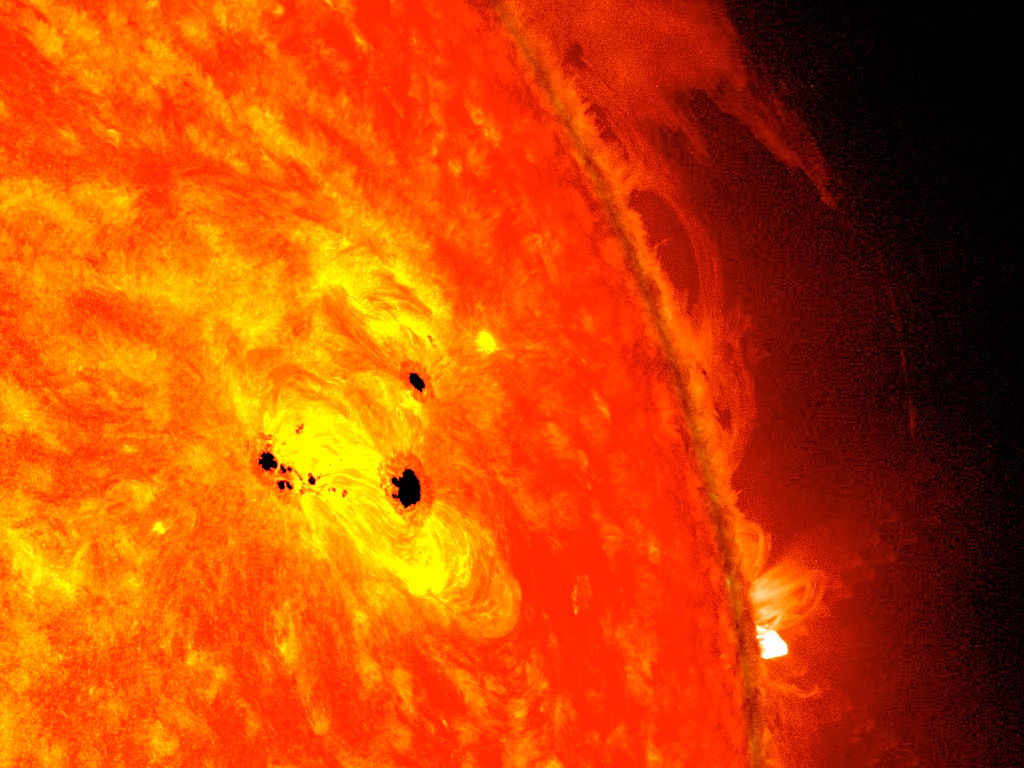NASA Sees Monster Sunspot Growing Fast, Solar Storms Possible

A colossal sunspot on the surface of the sun is large enough to swallow six Earths whole, and could trigger solar flares this week, NASA scientists say.
The giant sunspot was captured on camera by NASA's Solar Dynamics Observatory as it swelled to enormous proportions over the 48 hours spanning Tuesday and Wednesday (Feb. 19 and 20). SDO is one of several spacecraft that constantly monitor the sun's space weather environment.
"It has grown to over six Earth diameters across, but its full extent is hard to judge since the spot lies on a sphere, not a flat disk," wrote NASA spokeswoman Karen Fox, of the agency's Goddard Space Flight Center in Greenbelt, Md., in an image description.
The sunspot region is actually a collection of dark blemishes on the surface of the sun that evolved rapidly over the last two days. Sunspots form from shifting magnetic fields at the sun's surface, and are actually cooler than their surrounding solar material.
According to Fox, some of the intense magnetic fields in the sunspot region are pointing in opposite directions, making it ripe for solar activity.
"This is a fairly unstable configuration that scientists know can lead to eruptions of radiation on the sun called solar flares," Fox explained.
The sun is currently in the midst of an active phase of its 11-year solar weather cycle and is expected to reach peak activity sometime this year. The current sun weather cycle is known as Solar Cycle 24.
Get the world’s most fascinating discoveries delivered straight to your inbox.
NASA's Solar Dynamics Observatory launched in 2010 and is just one of a fleet of spacecraft keeping close watch on the sun for signs of solar flares, eruptions and other space weather events.
This story was provided by SPACE.com, a sister site to Live Science. You can follow SPACE.com Managing Editor Tariq Malik on Twitter @tariqjmalik. Follow SPACE.com on Twitter @Spacedotcom. We're also on Facebook & Google+.

Tariq is the editor-in-chief of Live Science's sister site Space.com. He joined the team in 2001 as a staff writer, and later editor, focusing on human spaceflight, exploration and space science. Before joining Space.com, Tariq was a staff reporter for The Los Angeles Times, covering education and city beats in La Habra, Fullerton and Huntington Beach. He is also an Eagle Scout (yes, he has the Space Exploration merit badge) and went to Space Camp four times. He has journalism degrees from the University of Southern California and New York University.



